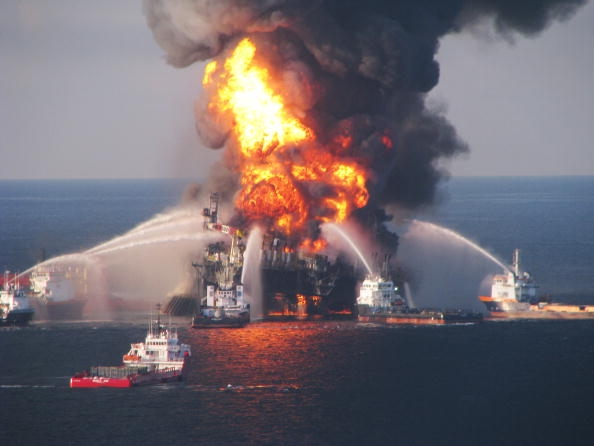Macondo blowout and the cost of exploration
Gulf of Mexico oil and gas production activities have now generally been restored to the level before the 2010 Macondo blowout. Drilling bans have been formally lifted, but secondary effects are coming in very strongly. These have a global reach for operations, costs, and ultimately oil prices.
Other than the severe loss of human life and spill itself, an outside indication of the effects of Macondo for GOM operations is that it now takes 3x as long to obtain a drilling permit for an individual exploratory well. The approval of exploration and development plans take similarly 3x longer, according to U.S. Government and company data.
The Macondo incident also had a rapid effect on E&P governance and procedures in oil and service companies world-wide, not only in BP and Transocean. Safety margins are more bigger and relief capabilities have been strengthened both in planning and equipment readiness. Regulatory oversight and auditing is tighter and there is a broad industry consensus that another Macondo must be avoided even as new exploration frontiers are tested.
Planning is not enough, and Macondo highlighted that time is of the essence to avoid the worst consequences after-the-fact. The loss of the drilling platform was the major eye-opener, as were the complications and time needed for relief well drilling. As an aside from this perspective, exploring for oil and gas in shales in the US definitely appears to have lower risk.
There is now a proposal from the petroleum oversight body, PTIL, in Norway that it shall always be possible to stop a blow-out using a single relief well. Shell and others have reacted by saying that the proposed changes would increase field well and subsea cost by over 50%. In a situation where a number of projects are already in the danger zone of not being economic, this and similar proposed changes can be very significant, in our calculations possibly exceeding 10 $/BOE.
While the discussion of this Norwegian proposal has just started, the focus is clear and the ultimate outcome is almost certain to further complicate field development and lead to cost increases in several areas. Importantly, the Macondo incident has also led to a much tighter cooperation between national oil industry regulatory bodies, such as between Norway, UK and the US.
Even Norway, priding itself with a very strong governance and good E&P safety record, has recognized that it can learn something from US oil and gas regulation and standards. One such learning effect is a much more hands-on approach, challenging oil companies in the field. The EU has of course also wished to intervene with standards, but has presumably been convinced that the influence of the UK and Norway will be enough.
The scale of possible further cost increases become accentuated when exploring in extreme depths, challenging reservoirs, and in Arctic conditions. Effectively, exploration may require two capable drilling rigs, with one in permanent stand-by. At a cost that can exceed 200,000 USD per day per rig, this quickly becomes a heavy draw on exploration budgets. Similar effects show up in HSE with extra equipment and people on standby, showing the big money involved.
As hard as it may be for traditionally independently minded oil companies, one response and result is to cooperate much more closely with each other, naturally also extending into the service domain. There is often informal, and sometimes formalized cooperation between neighboring field operators. Oil company cooperation in collecting seismic data in new basins can perhaps be a basis for more comprehensive approaches.
Tighter regulatory requirements, the companies’ own standards and increasing costs therefore suggest a need for a minimum scale and a much greater degree of “campaign” cooperation – perhaps further standardization and even integration of operations – to meet challenges. Such cooperation models may ultimately lead to cooperation and new solutions also in other areas. Importantly, the tightened standards should also protect the industry.
On the negative side, several new turns of the recent cost spiral seems unavoidable, needing larger single discoveries to be justified. These perspectives are very similar to what the oil industry faced in the late 1990ies with low oil prices. The largest oil companies therefore now seem to go back to what they have always been good at – elephant hunting. Regardless, the oil industry has proven its good citizenship and capacity for adaptation.
